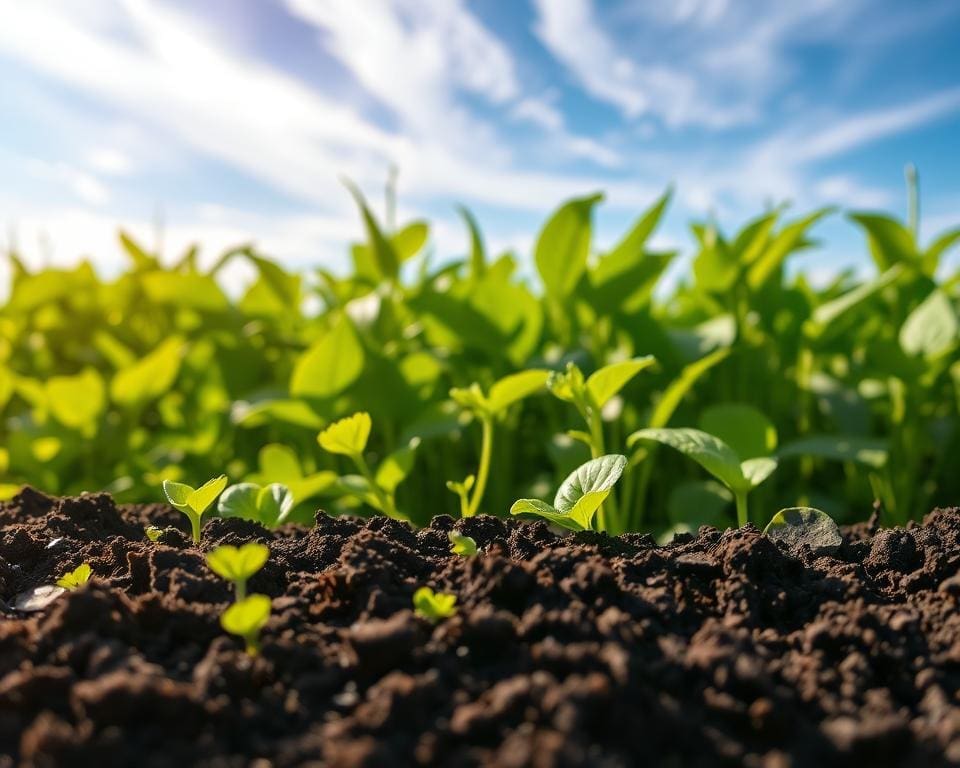In the ever-evolving realm of gardening, understanding how do you monitor soil pH with smart tools? is crucial for those aspiring to cultivate thriving plants. Soil pH is a decisive factor influencing plant health, determining the availability of essential nutrients. Traditional soil pH monitoring techniques, while foundational, often fall short in accuracy and efficiency. Fortunately, the advent of smart tools for soil pH analysis has revolutionised the way gardeners approach their soil health. These advanced technologies enable precision monitoring, empowering gardeners to make informed decisions that lead to enhanced plant vitality. As we delve deeper into the world of soil pH monitoring, the transformative potential of digital tools will become increasingly clear.
Understanding Soil pH and Its Importance
The relationship between soil pH and plant health remains a fundamental aspect of successful gardening and agriculture. Soil pH, a measure of acidity or alkalinity, plays a pivotal role in determining nutrient availability for plants. A balanced pH creates an optimal environment that supports healthy growth, while imbalances can hinder nutrient absorption.
The Role of Soil pH in Plant Health
Maintaining the right soil pH is crucial for robust plant health. Most plants thrive in a pH range of 6.0 to 7.0, allowing them to access essential nutrients efficiently. When pH levels drop below this range, soil becomes more acidic, often leading to deficiencies in vital nutrients such as phosphorus, magnesium, and calcium. Conversely, excessively alkaline soil can lock up nutrients, making them unavailable for uptake. The soil pH importance cannot be overstated, as it directly impacts both growth rates and overall plant vitality.
Optimising Nutrient Availability through pH
To maximize nutrient availability, gardeners and farmers must be aware of their soil pH. By adjusting pH levels through amendments like lime for acidity or sulphur for alkalinity, the nutrient profile can be significantly enhanced. This adjustment not only benefits individual plants but also contributes to long-term soil health. Regular monitoring and proactive management of soil pH is key to achieving optimal conditions for sustainable plant growth and productivity.

Traditional Soil pH Monitoring Techniques
Traditional soil pH monitoring techniques have long been the backbone of gardening practices. Among these, manual soil testing remains a widely used method. This approach involves straightforward techniques that can be performed with relatively simple tools, allowing gardeners to gauge their soil’s pH levels directly. Despite its accessibility, it grapples with several shortcomings that can affect its reliability.
Manual Testing Methods
Manual soil testing typically employs kits or tools like pH test strips or litmus paper, making it easy for gardeners to assess pH levels on-site. This hands-on approach encourages active engagement with the gardening process. The simplicity of these methods appeals to both novice and experienced gardeners alike, as they require minimal setup and provide quick results.
Nevertheless, manual soil testing often reflects a mere snapshot in time, failing to capture the dynamic nature of soil chemistry. Variations in moisture content or contamination can skew readings, leading to potential misinterpretations. Additionally, the accuracy of results heavily relies on the user’s technique, opening avenues for human error.
Limitations of Conventional Soil Testing
While traditional methods of soil testing offer valuable insights, they come with notable limitations. One significant challenge arises from the reliance on a single point measurement, which may not signify the overall soil health. This method often overlooks variations within different sections of a garden bed, potentially leading to suboptimal gardening decisions.
Moreover, the limitations of soil testing methods extend to their inability to account for fluctuating pH levels caused by various environmental factors. Soil testing challenges, such as the need for fresh samples and the transient nature of nutrient availability, can hinder a gardener’s ability to maintain the ideal pH balance. As smart technologies gain traction, these conventional techniques are increasingly perceived as outdated, leaving room for more comprehensive solutions.
How do you monitor soil pH with smart tools?
The advent of smart soil monitoring technology has transformed the landscape of gardening and agriculture. Unlike traditional methods, these innovations offer a seamless way to track soil health in real-time. Equipped with advanced capabilities, digital tools for soil analysis enable gardeners to make informed decisions, promoting vibrant plant growth and optimal yields.
Overview of Smart Soil Monitoring Technology
In recent years, smart soil monitoring technology has gained significant traction. Devices such as smart pH sensors and IoT-enabled instruments provide precise readings of soil conditions. These tools not only measure pH levels but also assess various factors including moisture and nutrient content. The integration of these features allows for comprehensive soil assessment, ensuring that plants receive exactly what they need for growth.
The Benefits of Digital Tools for Soil pH Monitoring
The benefits of digital pH monitoring extend far beyond mere convenience. Embracing these technologies results in:
- Improved Accuracy: Digital tools deliver exact measurements, reducing the margin of error often associated with manual testing.
- Ease of Use: User-friendly interfaces make it simple for both novice and experienced gardeners to access soil data effortlessly.
- Time-saving Capabilities: Continuous monitoring means less time spent on manual checks, allowing gardeners to focus on nurturing their plants.
Types of Advanced Soil pH Monitoring Devices
In the realm of modern agricultural technology, a variety of advanced soil pH monitoring devices have emerged, transforming the approach to soil analysis. Smart soil pH sensors are at the forefront of this revolution, offering remarkable precision and ease of use. These devices are often connected to mobile applications, allowing users to gather data effortlessly while ensuring optimal conditions for plant growth.
Smart Soil pH Sensors Overview
Smart soil pH sensors provide real-time measurements that are crucial for maintaining balanced soil chemistry. These sensors typically feature advanced technology that delivers accurate readings within moments. Users can monitor soil pH through user-friendly apps, ensuring that adjustments can be made without delay. The accessibility and simplicity of these devices make them essential tools for both amateur gardeners and professional farmers alike.
Precision Soil pH Monitoring Instruments
Precision soil testing instruments take soil analysis to the next level, offering comprehensive insights beyond just pH levels. Equipped with advanced analytical capabilities, these instruments can evaluate multiple soil properties, including nutrient content and moisture levels. Such detailed information enables growers to make informed decisions that enhance productivity and sustainability in their agricultural practices.
Measuring Soil pH with Technology
In the realm of modern gardening and agricultural practices, measuring soil pH with technology has revolutionised how enthusiasts and professionals manage their land. The advancement of wireless soil pH readers and accompanying software applications has made it easier to obtain accurate readings while enhancing data management.
Wireless Soil pH Readers
Wireless soil pH readers provide a convenient way to check soil acidity levels without the hassle of traditional testing methods. These devices allow users to take readings from various locations in their gardens or fields, offering insights into the soil’s condition while minimising disturbance to plant life. Many of these tools connect seamlessly to smartphones or tablets, enabling real-time monitoring. With the simplicity of use, these devices are suitable for both novice gardeners and experienced agriculturalists alike.
Apps and Software for Data Management
The evolution of technology does not stop at wireless readers; soil data management apps have become indispensable for interpreting and utilising soil information. These applications enable users to track, store, and analyse their pH levels over time. They often come equipped with features like graphical analysis and historical data comparisons, which can assist in making informed decisions about soil amendments and planting strategies. Combining wireless soil pH readers with robust software solutions fosters an analytical approach to effective gardening and land management.
Benefits of Using Smart Tools for Soil Analysis
The integration of smart tools in soil analysis offers a transformative approach to managing soil health and optimising crop yields. With a focus on the benefits of smart tools, gardeners can significantly enhance their ability to perform accurate soil analysis that informs their practices.
Improved Accuracy and Efficiency
Smart tools provide a level of accuracy previously unattainable with traditional methods. By leveraging advanced technology, these tools minimise human errors and ensure reliable measurements. Such precision not only leads to better-informed gardening decisions but also optimises resource usage, promoting sustainability in agricultural practices.
Real-time Data for Better Decision-making
The accessibility of real-time soil data enables gardeners to react promptly to changing conditions. This immediacy allows for adaptive management strategies that contribute to healthier plants and higher productivity. Being equipped with up-to-date information enhances one’s capability to fine-tune soil conditions and respond effectively to a variety of challenges, ensuring optimal growth outcomes.
Integrating Smart Tools into Your Gardening Routine
Embracing technology in gardening can significantly enhance one’s approach to plant care. By integrating smart tools in gardening, you can establish effective routines that lead to thriving plants and sustainable practices. A well-structured soil monitoring schedule ensures that essential checks for pH levels become a standard part of your gardening activities.
Creating a Regular Monitoring Schedule
A regular soil monitoring schedule is vital for maintaining optimal garden health. Setting specific days for monitoring soil pH allows you to stay ahead of potential issues. Many gardeners benefit from incorporating digital reminders through apps linked to smart devices, ensuring that the monitoring process fits seamlessly into existing routines.
Combining Soil pH Data with Other Environmental Factors
Understanding environmental factors in gardening, such as moisture levels and temperature, paves the way for more informed decisions. Combining soil pH data with these elements creates a holistic view of garden conditions, allowing for precise adjustments that cater to plant needs. By monitoring these interactions regularly, you’ll find a major improvement in plant vitality and gardening success.
Future Trends in Soil pH Monitoring
As we explore the future trends in soil monitoring, it becomes increasingly clear that advancements in soil pH technology will play a pivotal role in transforming gardening and agriculture practices. With the incorporation of machine learning and artificial intelligence, gardeners can expect a revolution in how soil health is analysed, allowing for more precise and timely interventions. This evolution in soil analysis innovation promises to enhance plant growth and yield significantly.
Sustainability is another cornerstone of these emerging trends. A shift towards environmentally friendly smart tools is anticipated, as consumers increasingly demand practices that minimise the ecological footprint. Innovations that not only monitor soil pH but also promote sustainable gardening techniques will lead to a more harmonious relationship between cultivation and the environment, paving the way for future methodologies.
Moreover, as connectivity improves, fully integrated systems that combine soil pH data with broader environmental parameters will become commonplace. This comprehensive approach will allow gardeners to make informed decisions driven by real-time insights, marking a significant leap forward in the realm of soil management. The future of soil pH monitoring is bright, filled with countless possibilities for those eager to embrace these advancements and innovations.









